A Guide To Buying a Shower Bath

When it comes to daily rituals, people tend to fall into two separate camps. Some people like to sit back, relax and soak in a bathtub, while others prefer the speed, convenience and sensual feeling of a shower. In busy households or those with smaller bathrooms, it is often hard to please everyone: enter the Shower Bath.
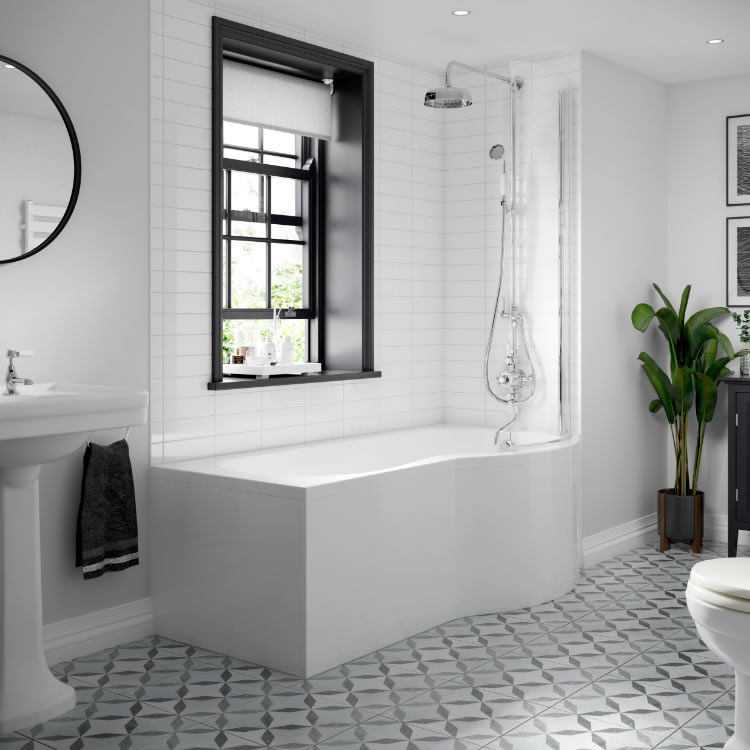
In this shower bath buying guide, it will provide all the key information to make a decision on whether this type of bathtub is for you, help you understand your J-Shaped baths from your P-shaped baths, and much more.
What Is A Shower Bath?
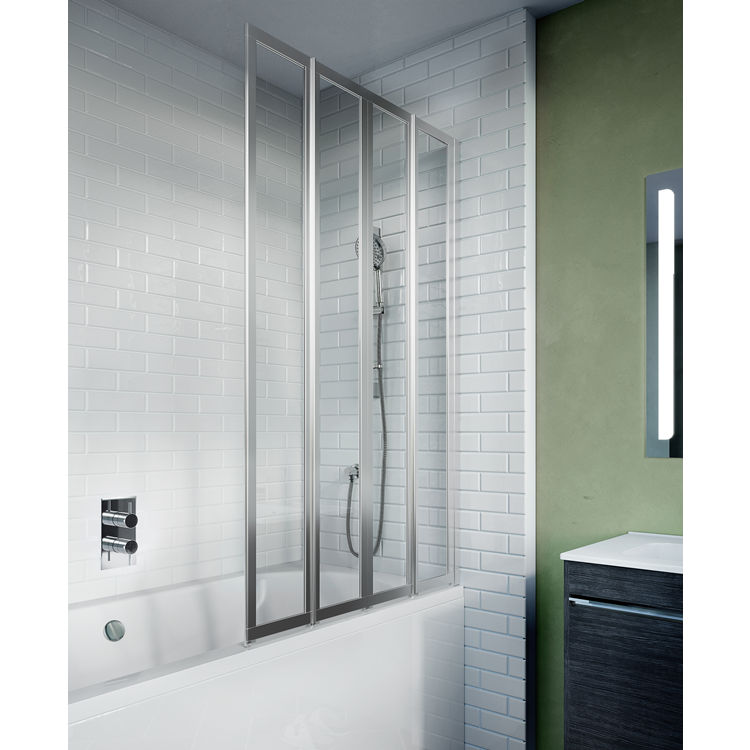
First of all, tackling the question of what a shower bath actually is, the easiest way to describe one is a bathtub that comes with a shower screen (or that can be fitted with one), and where one end is shaped to suit standing to shower.
Due to this, by definition, all shower baths are technically also single-ended baths, which means they can only be bathed in from one side and by one user at any time – unless you enjoy co-bathing and showering at the same time as each other!
However, there are certain things to look into when it comes to bath types and showering in regard to fitting and shower systems and kits, which will be addressed in the next section.
With their design, these baths tend to come with one end that is fitted directly back-to-wall for an overhead shower, such as a shower riser-rail kit, while the other is for bathing. These can be recessed into a certain-sized space, or fitted with bath panels to hide away the plumbing, legs or frame underneath.
Are Shower Baths A Standalone Type or Can All Baths Be Shower Baths?
This is a really nuanced answer as it depends on the type of bath being purchased. Shower baths are their own standalone product, although they can crossover with many other types of baths.
A shower bath usually comes with the ability to fit a fixed or hinged shower screen. Some baths simply do not have the ledge thickness or shape to be able to support a screen. They need to be quite thick and also flat, so anything that doesn’t have this is probably impractical, and doesn’t meet the criteria for being a shower bath.
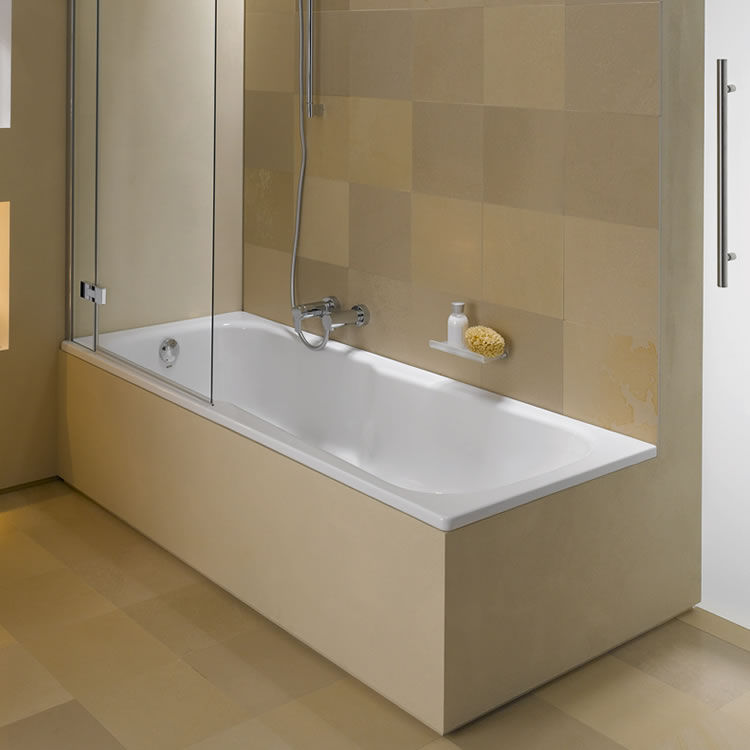
In terms of style, shower baths are not limited to one design either. They can be fitted or inset, standard or freestanding, and even squared or curved. There is a rich variety to suit both modern and traditional spaces, and to suit all tastes. The freestanding option provides a real compromise to those looking for something stylish and eye-catching but who may not have either the budget for a full freestanding bath, or who do not want to lose the practicality of a shower completely.
The only counteractive point to this is that theoretically a bath could be paired with a shower handset and hose for rinsing and washing with. But even then it poses a real risk of water escaping onto walls and floors, and nobody wants to waste time having to drop and mop up floors after usage. Some other types of freestanding baths can lend themselves well to pairing with a shower handset and hose, such as a back to wall bath, while in non-freestanding baths, a corner or offset bath provides the same opportunity.

While these would be baths with a shower, a shower bath really is only one where it can be used with an overhead shower, such as a rainfall shower, electric shower, or shower riser rail kit, and has that screen functionality.
Types of Shower Baths
When it comes to shower baths, these can be broken into two types – standard or freestanding. What you prefer comes down to personal taste, however, we have covered the pros and cons of both below:
Standard Shower Baths
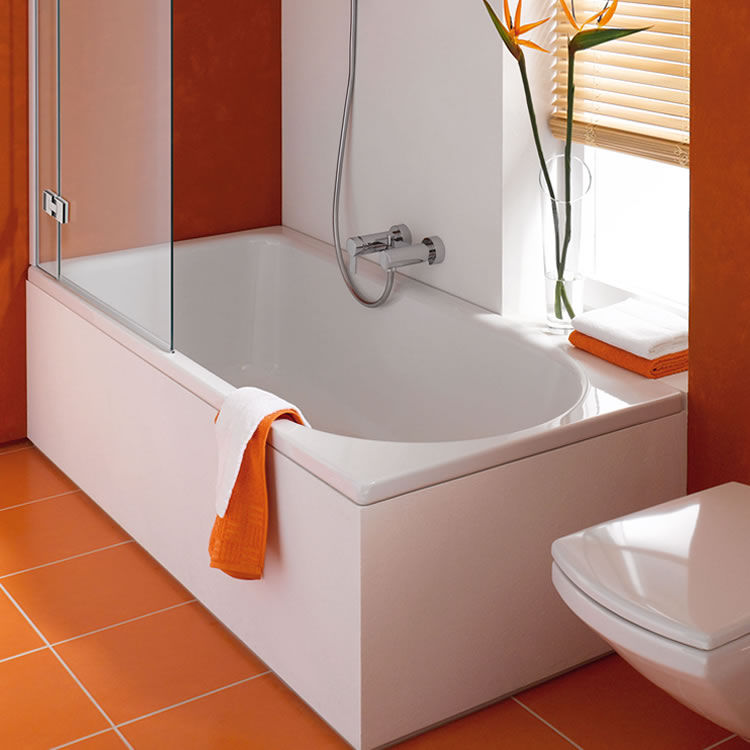
A standard shower bath is usually one that is fitted to a wall or into a space and is finished with a bath panel to cover the underbelly, frame and pipework. In terms of design, they are often pretty simple, which makes them a great affordable and universal choice for any bathroom space without going overboard.
This makes them a great choice for family bathrooms, where money and budget is often a consideration, and especially for those homes where you may consider selling in future. However, as a consequence, if being the talk of the town or having something eye-catching to show off to others is a priority, then a simple shower bath may not be for you.
Pros | Cons |
Design that is aesthetically appealing to a wide number of tastes | Can look quite basic and uninspiring |
Simple | Material and colour is quite limited |
Modern and Fresh Look | Style is restrictive |
Can be installed in a variety of spaces/layouts | Some only allows for use of panels/screens from the same brand |
Affordable | |
| Suitable for small spaces |
A standard shower bath comes in a variety of shapes from standard rectangular (squared edges) to curved. Some are also spacesaver baths, which means they are narrower at one end to the other, which is ideal for smaller spaces.
By and large, they are coloured white and made from acrylic, and ideal for modern spaces, or a steel-finish if looking for something sturdier and resilient. If looking for something more traditional, the only ability to do this is to be playful with the bath panel (and even then this is only more suited to straight baths), where it is possible to install with a coloured or styled bath panel, such as one with a shaker style design.
Freestanding Shower Baths
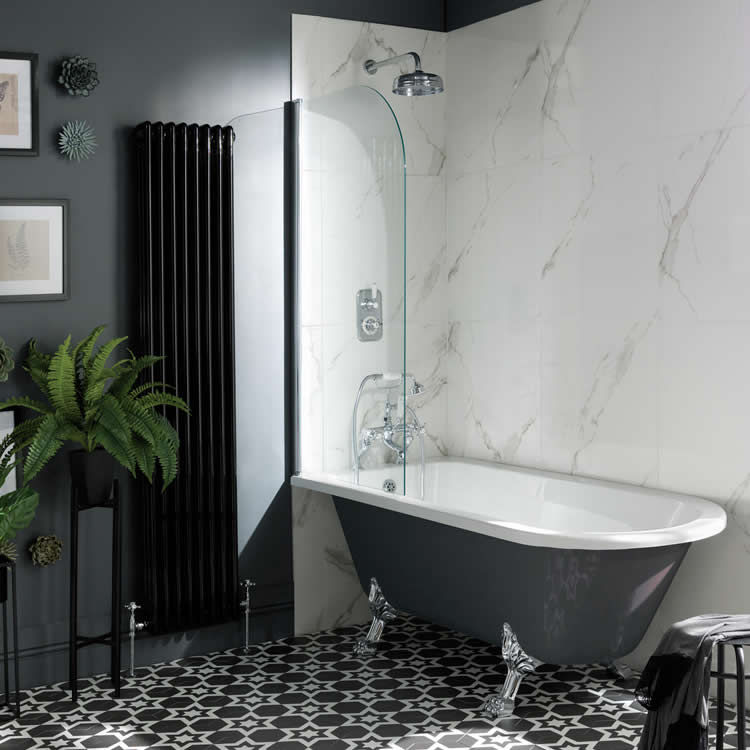
A freestanding shower bath works in the same way as a standard one. By and large the difference is that with freestanding baths, it can be positioned more flexibly, although it is still best suited back to a wall.
When it comes to freestanding shower baths vs a standard one, they do offer more eye-catching designs. This can include a variety of painted exteriors, bath legs and decadent features such as roll-top edges with flat tops to allow for the bath screen. As such, there is more versatility when it comes to bathroom themes.
However, as a consequence they are almost mostly restrictive to being traditional by style. So, if period style, sumptuous curves and intricate detailing is the look being sought after then one of these is ideal. The legs can help lift the bath off the ground giving the illusion of a bigger room, often a downside to small bathrooms and with standard baths that can make a room smaller.
Pros | Cons |
| More eye-catching designs | Mostly traditional designs with bath legs |
| Suitable for smaller spaces | Rigid or fixed shower screen (if provided) |
| Can help widen the room size | Limiting in terms of bathroom style |
| Can get painted exterior options |
If a modern freestanding shower bath is being looked at, there may be one or two options, otherwise it may be looking at a more transitional design style space, incorporating both traditional and modern touches.
What Are The Shower Bath Shapes?
Now we have addressed the types of shower baths, it is time to delve into the shapes of shower baths. These generally fall into one of six categories:
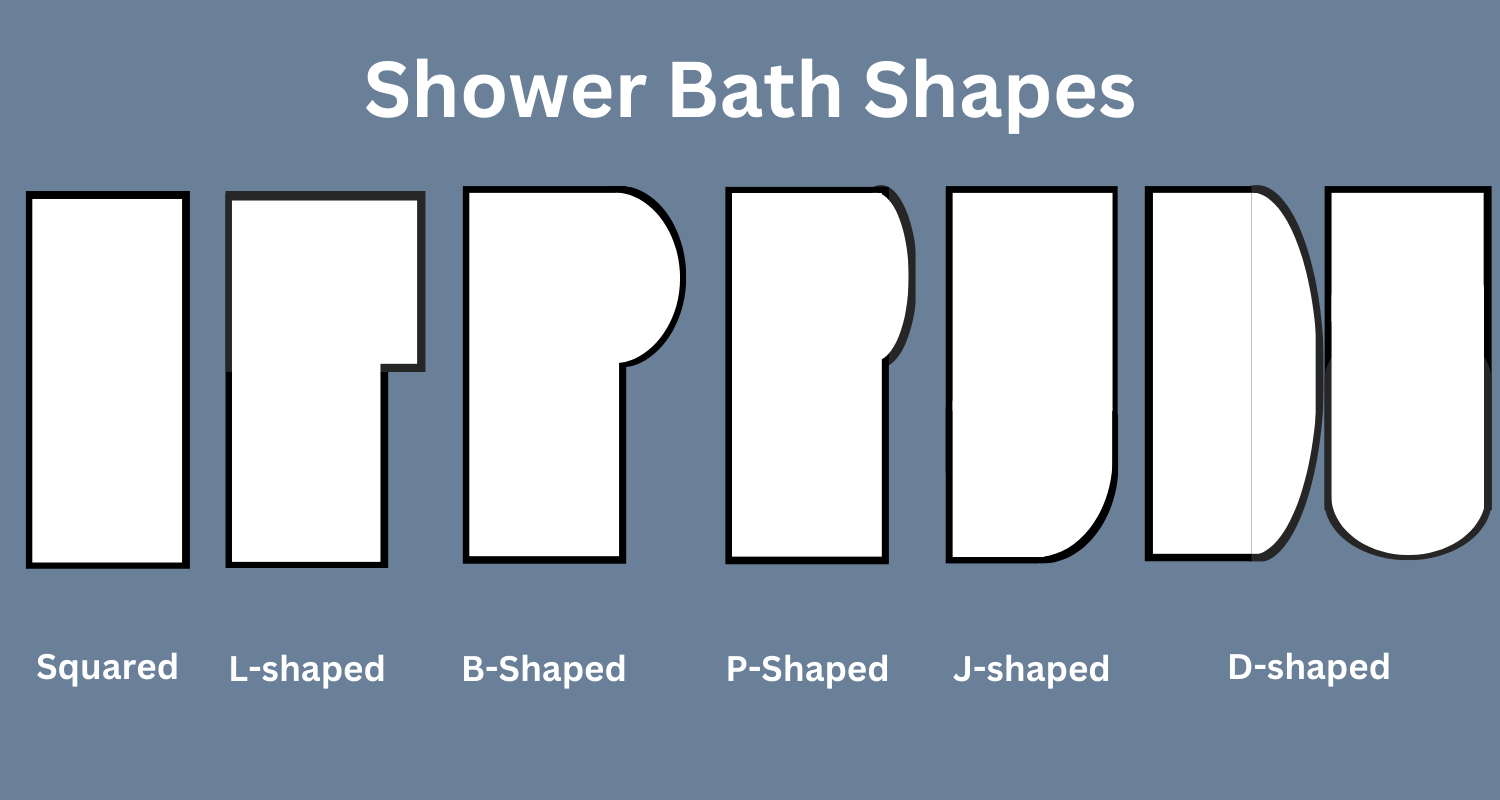
Squared
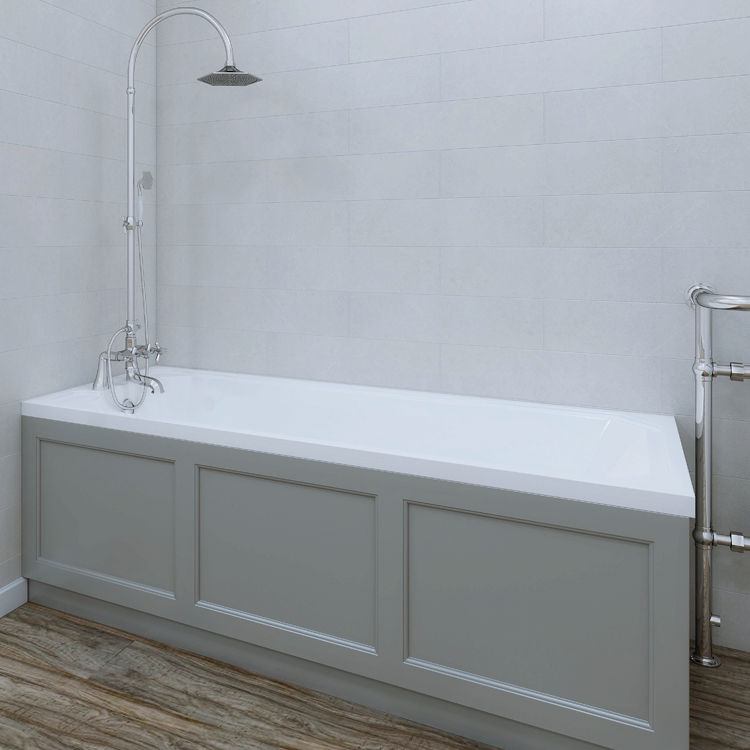
Squared Shower Baths are shower baths with four straight edges, typically rectangular. They can be installed a number of different ways:
- Fitted against two adjoining walls with a front and end bath panel
- Recessed into a gap with just a front panel
- Inset or recessed into a built structure with no bath panels
These don’t necessarily have a handing since the bath can be turned 180 degrees to install the different way.
Some straight baths have the option to position a bath waste and filler at either the front or back of the bath, which does mean some element of ‘handing’, though this isn’t what people think of when it comes to handing.
L-Shaped
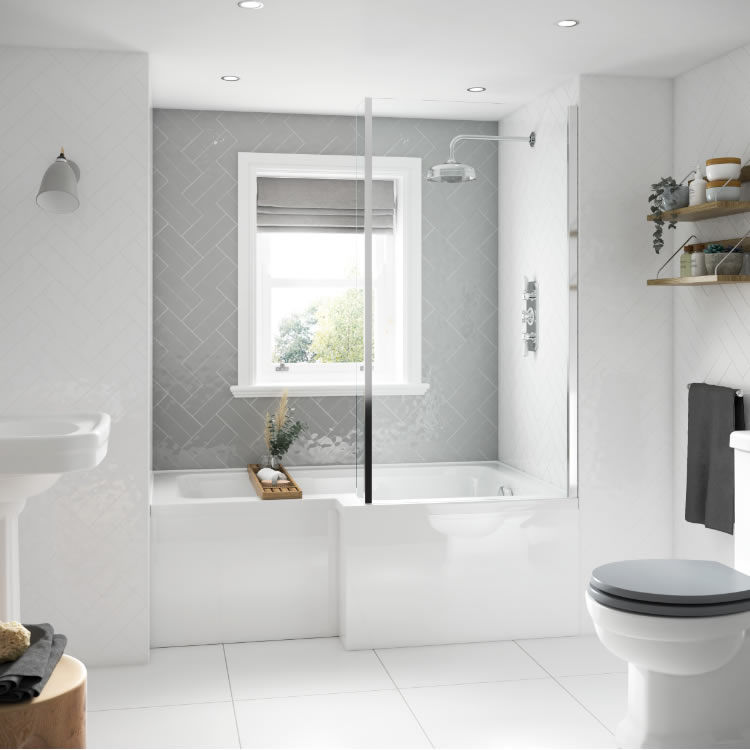
L-shaped baths feature angular, straight lines as opposed to a curve. They have a straight or rectangular main body shape with one end widened further outwards, in terms of depth, for the showering area.
These baths can come in handed versions depending on which end the shower end is preferred.
P-Shaped
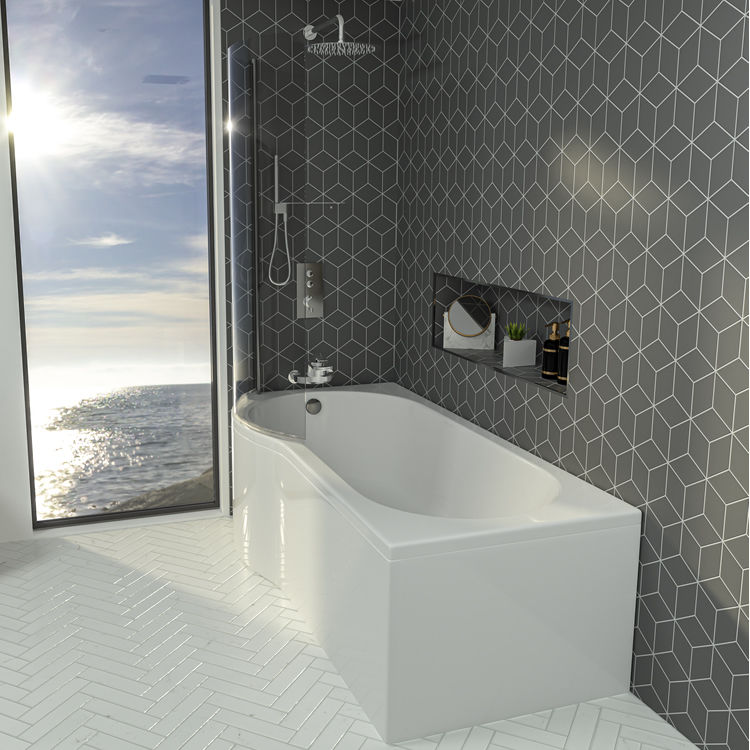
P-shaped baths (or p baths for short) feature a squared end, and then an end that curves outwards. The straight end is used for bathing, while the curved end provides a more spacious area for showering in. It will be accompanied by a curved glass panel, and a p-shaped front bath panel, and straight end panel, if required.
These baths can be handed left or right, which is why the right-handed versions look like a capital P, while the left-handed version looks like a mirrored backwards p (i.e. d).
B-Shaped
Much like a P-shaped bath, it would be forgiven if you looked at these and thought they were the same. However, a b-shaped bath tends to feature a bulkier shower end than a P-shaped bath. Some b-shaped baths from some brands also have a curved, thicker bathing end making it look more like a capital ‘B’.
J-shaped
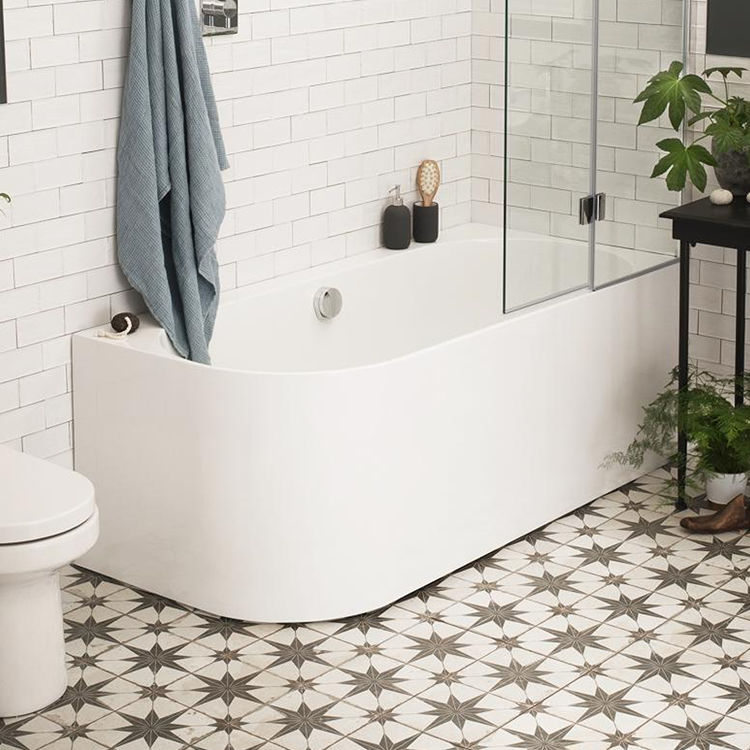
J-shaped shower baths have straight back and end, while the front starts straight and sweep around in a simple, quadrant-like curve. These can come in left or right handed designs too.
D-shaped
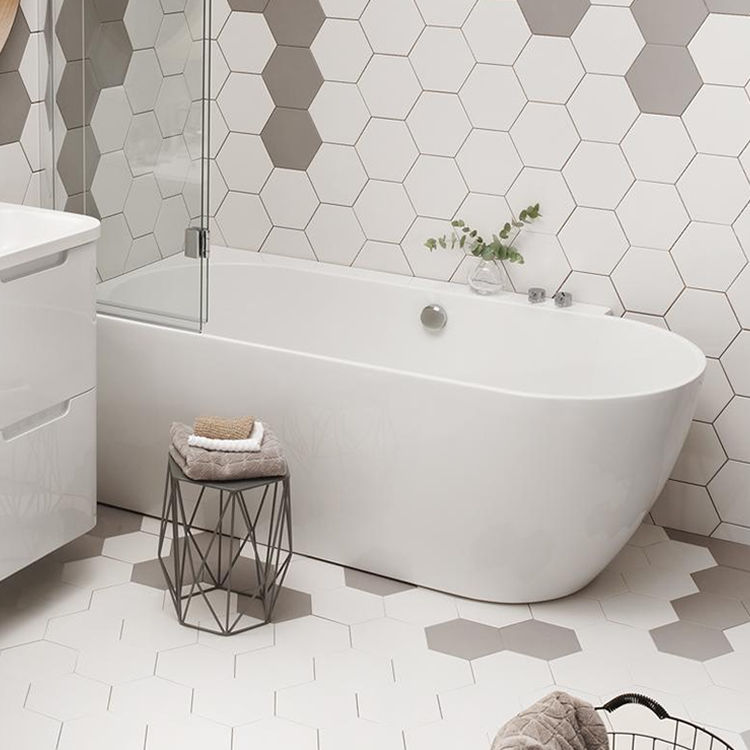
D-shaped baths come in one of two typical designs. The first is a straight-edged flat back that is usually positioned against the chosen wall or surface. It has two straight sides, and a smooth, curved front.
The other design looks like a really stretched ‘D’. This features two longer, straight edges at the front and back, and then a curved end.
These baths don’t necessarily have handings since like square baths, they can be turned 180 degrees to fit against the chosen wall in one option, while the other sits completely back to wall.
What is Handing – Should I Get A Left or Right Handed Shower Bath?
Handing is a phrase used to refer to the way the bath intends to be installed. Although the meaning usually refers to which hand is used to open, operate or use items, in a lot of instances it simply refers to the direction the bathroom item is positioned or located.
In the case of shower baths, a left handed shower bath will usually be positioned with the wall to the left-hand side, or in recessed showers, with the shower brassware to the left hand side of the bath. Right handed shower baths are simply the opposite.
In terms of whether there is an advantage or reason for choosing one over the other, there isn’t really any to consider. It simply comes down to the layout and positioning of the space, and how best easily to fit in the bath in relation to the plumbing and waste systems, as well as personal preference if both are an option.
What Are The Typical Sizes and Dimensions of Shower Baths?
When it comes to the size and dimensions of shower baths, there are a few factors to consider.
Our guide to understanding bath sizes breaks down some of the more common sizes, and the typical lengths of different tubs in case an idea of how the different types measure up.
In terms of a shower bath, they come in a variety of sizes, which makes them adaptable to just about any space. In the table below, we have summarised a general approximation of the more common sizes.
Typical Length | Width/Depth | Height |
| 1400mm - 1800mm | 600mm - 900mm* | 350mm - 700mm* |
With length, this is as small or as big as you can afford. It is worth remembering to factor in some tolerance for any boxing, tiling and sealing in the bath, so the true measurement of the space may be slightly larger than the actual bath.
Width (or outward depth) is one to keep an eye on when it comes to sizes. For straight baths, this is pretty straightforward as it will just be one size with popular widths being 600-800mm. D-shaped baths will also have the same ease, since it’s a consistent length and width.
However, when it comes to measuring a shaped bath, such as P-shaped or L-shaped bath, these will be given two width or depth dimensions. One measures the width at the shortest end or bathing end, while the other measures the outward, deeper shower end.
There’s no real right or wrong answer about which end should be measured in terms of deciding what is right for the space. In fact, much of this will be dictated by layout and preference. It is worth mentioning that if this is being fitted into a pre-existing measured space, such as a recess where the sizes are constrained, if measuring in relation to the wall size to create a neat finish, it is likely to mean one end will either be indented or protruding, depending on which you go off. This could mean a narrower bath, or alternatively less floor space. It really comes down to which is a bigger priority.
In terms of height, it is worth remembering that a bath size in height is not the height of the installed product, as it will be fitted in to accommodate plumbing. Most shower bath depths fall into the 350-500mm mark, however, freestanding baths with legs are larger in height. Some of these will err towards the 650-700mm mark when installed.
Do Shower Baths Come in Different Thicknesses?
This really depends on the manufacturer and the material. Thickness is only used to describe the material used.
A lot of shower baths will come in acrylic, which is a plastic-like material and standard for the industry. Some brands offer a choice of options between a standard acrylic or a reinforced acrylic, like Tissino or Eastbrook’s Beauforté finish. These add an extra layer of resin or fiberglass inside the bath to help make it a stronger, more resilient material, increasing the thickness slightly (although probably not as noticeable to the naked eye). The amount of acrylic used will always be the same between standard and reinforced versions, though, which is generally between 4mm-6mm depth.
Another material that will come across – used by Kaldewei and Bette – is steel enamel. The advantages and disadvantages of each can be found in our steel vs acrylic baths blog here. However, the thickness of this is usually between 2mm and 4mm but because it’s metallic, it does retain and keep heat really well.
What Are The Benefits of A Shower Bath?
There are numerous benefits when it comes to having a shower bath. Here’s a quick in-a-nutshell of the key ones:
- Affordable – the price point of a shower bath can often be cheaper than a freestanding bath. As such, they are great for every-day family bathrooms
- Combine the best of both worlds – they combine the best of both worlds to suit people who prefer bathing or showering. It also means that if you’re in a rush, the convenience of a shower is there than waiting for a bath to fill
- People-pleaser - Tied into the above, it means no unhappy household members or frustrations. Everyone can be happy!
- Long-lasting usage – Many shower baths come with long lifespans because of the durability they possess
- Adaptable to a variety of spaces – There is a plethora of different sizes to choose from and with different shapes too, they can be accommodated in just about any space
- Easy to maintain and clean – There’s no special care required with these. Manufacturers will provide specific guidance about regularity of cleaning and not using abrasive materials. However, the bath can be cleaned with soap and water, while the glass can be used with any glass cleaner to keep it sparkling.
- Can fit in with any theme – As they are a colour that is plain in white, they can often fit in with a variety of colour schemes without standing out like a sore thumb
- Customisable – A shower bath can be customised to suit your taste. This could be in choice of accompanying brassware in style or colour. In some cases, you can even select a preference of bath panels, bath screen (or shower curtain), or accompany shower accessories.
- Suitable for all the family – They are great for family bathrooms, especially busy parents bathing young children. They can even be used for giving the family pooch a bit of a washdown!
Can You Put A Shower Bath Under A Window?
You can put a bath under a window but there are practical considerations as to why you may not want to. Firstly, in an emergency, the bathroom window is an exit point. Secondly, for ventilation reasons, it is important to be able to access the bathroom window to prevent moisture build up, mould and mildew, as well as removing unpleasant smells quickly. As long as you are comfortable, or it is still accessible, then it shouldn't be a problem. And if you are able to open the window, then it can in fact help with ventilating and removing moisture much faster since the bath is closer to the window.
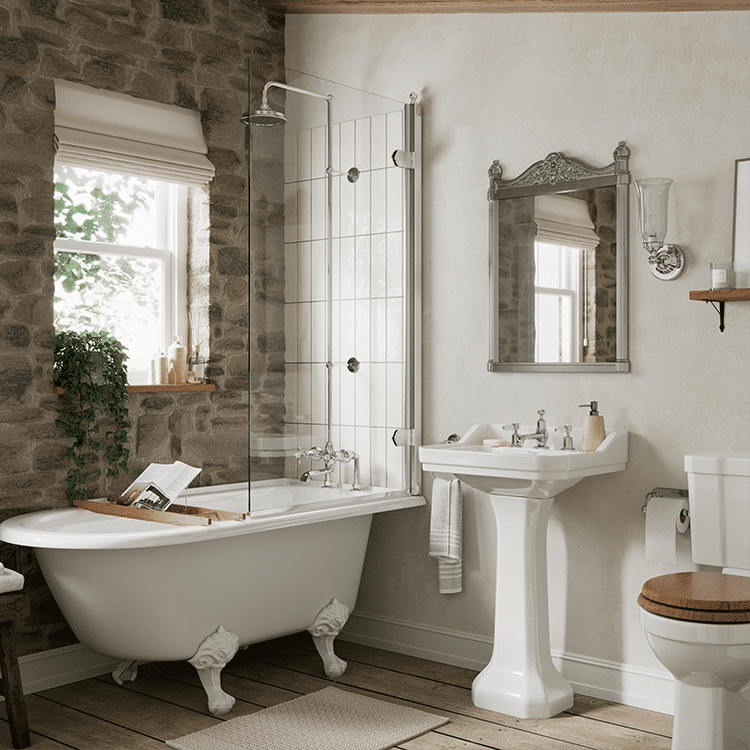
There is another consideration in ensuring privacy is maintained by putting some kind of block in the way of the window, such as a waterproof blind or shutters.
With some spaces, putting a bath under a window can create a stylish focal point when entering a room, as well as being the only practical way to accommodate a tub into the space. It really is worth consulting a fitter in the first instance to find out what exactly is practical in the space.
Do Shower Baths Come Pre-Drilled With Tap Holes & Can You Fit Taps?
This depends on the shower bath and also your personal preference. Many baths come undrilled, and will need to be drilled in by the fitter installing the bath. This is to accommodate the number of taps, and type, you are preferring.
In almost all cases, this will be 2 tap holes and above if being drilled into a bath. This could mean installing separate hot and cold water faucets, a bridge mixer tap or a standard bath mixer tap, with or without a shower handset (though if you have a shower handset installed with the bath, it is probably unnecessary).
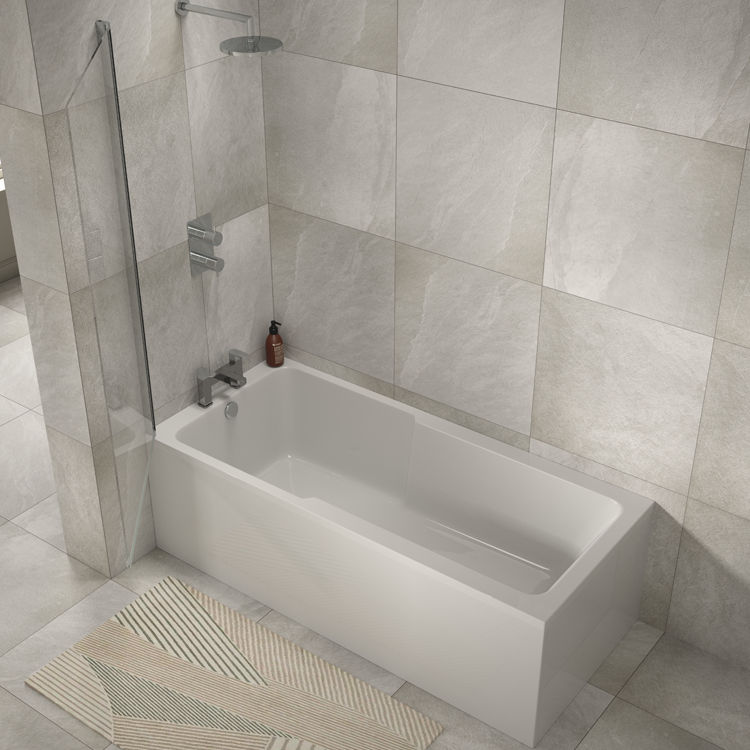
Another option is three tap hole bath taps, which include two lever bath valves for the hot and cold water, and accompanying spout or bath filler, or shower handset. There are very few four of five hole tap sets as well, which include just about everything.
Aside from drilling into the bath, another option for a clean and tidy finish – providing the plumbing can accommodate it – is to fit wall mounted bath taps. These can be in both traditional or modern styles and can be placed on the back wall or side wall. For modern designs, this can provide a pleasant, tidy and aesthetically-clean finish, while traditional taps can offer decadence and stylish touches without having to drill into a bath.
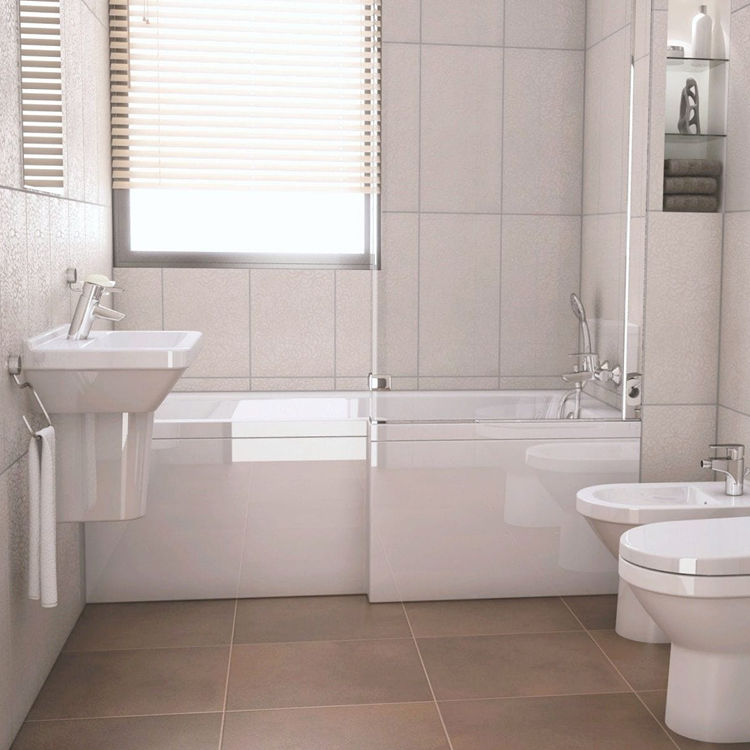
Shower Bath Pictures, Ideas and Styles
If you are seeking inspiration on shower baths, there are images littered throughout this blog on the styles and designs. However, if you want some more lifestyle images to show off how shower baths look in terms of wider bathroom styles, there are several collated below to view:
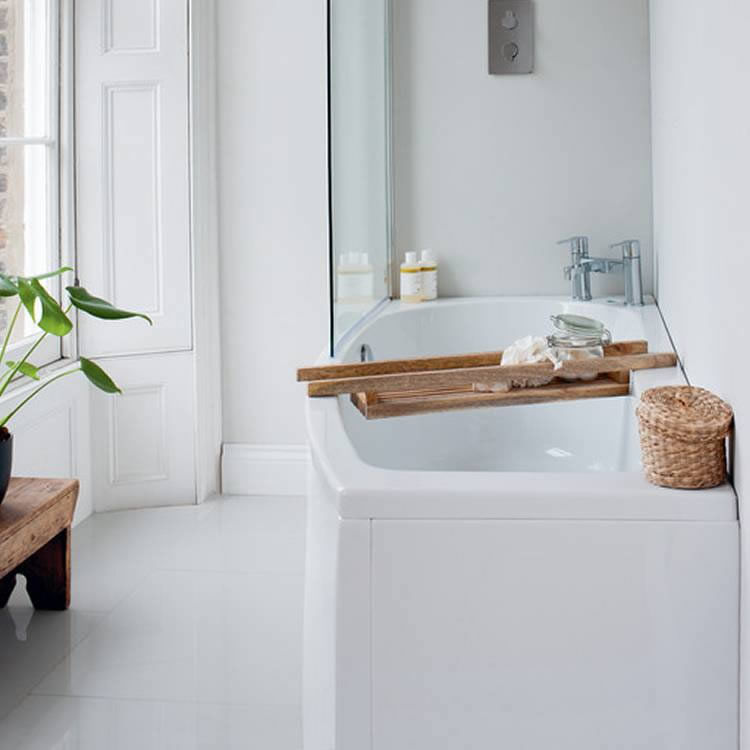
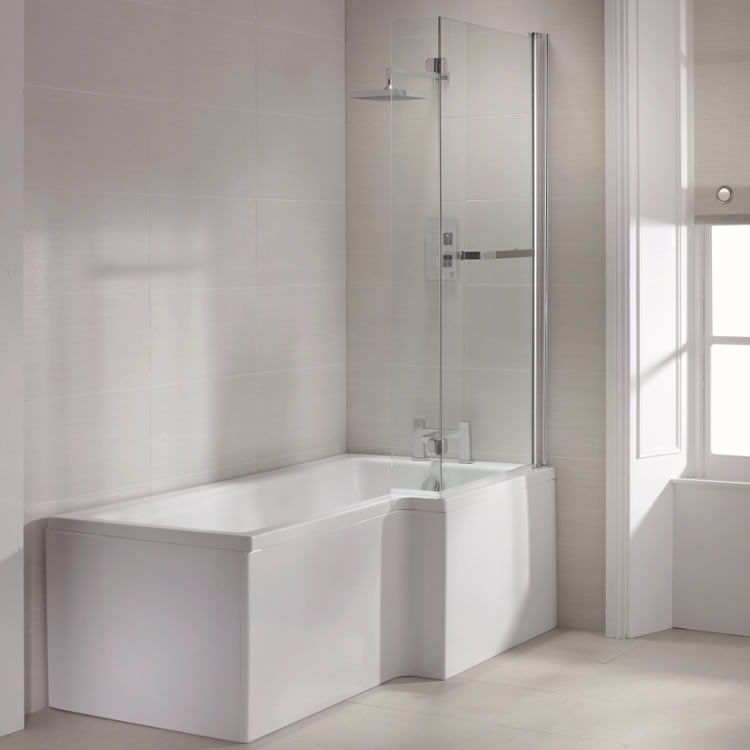
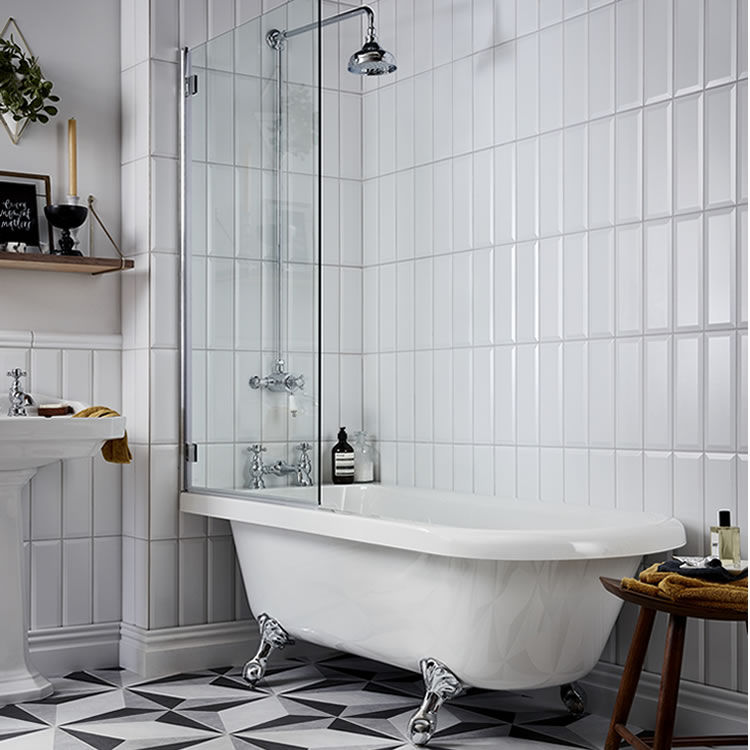
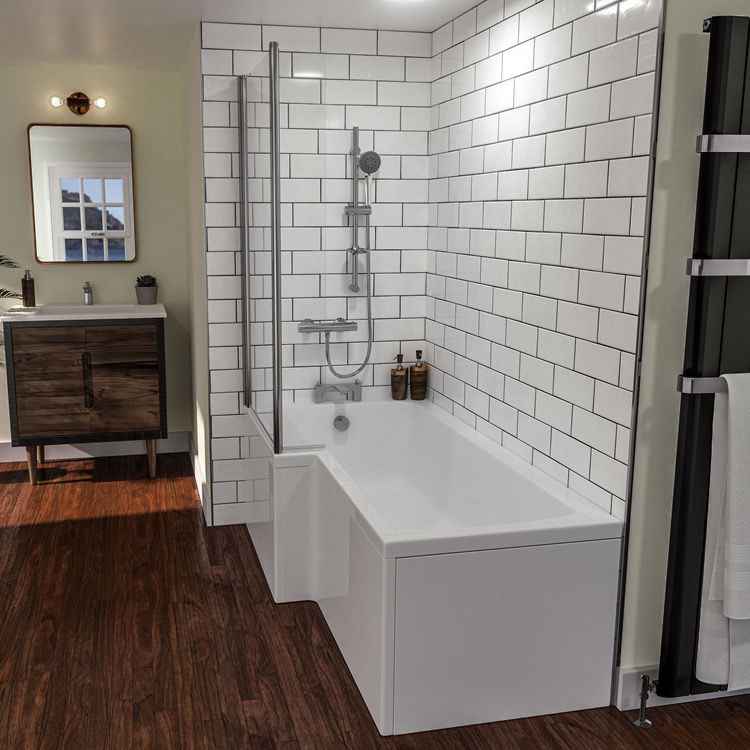
Shower Bath Manufacturers
Many companies that supply baths offer a range of normal baths, shower baths and freestanding baths. However, we have listed a few here to take a look at:
Acrylic Shower Baths
Steel Shower Baths
What Is The Cost of a New Shower Bath?
The cost of shower baths varies from retailer to retailer, and from brand to brand. Some retailers have their own-brand products, which can be offered at affordable prices.
At the lower end of the scale, some baths can be around £250-£300, while the upper limit is really as much as willing to be paid. Nevertheless, an approximate top level is around £500-£1,200 depending on the finish such as whether it is reinforced or not, and whether it is a freestanding bath or not.
Is There A Best Shower Bath?
The final question covered in this piece is whether there is a best shower bath. Each brand and design will have its own benefits and USPs, and the products we offer we research in terms of quality before offering them on our website.
In terms of purchases, some of our best sellers over the last 12 months are:
- Waters Ebb 1590mm Single Ended Shower Bath / 1660mm Single Ended Bath
- Eastbrook Beaufort Portland 1600mm Single Ended Bath / 1800mm Single Ended Bath
- Eastbrook Beaufort Biscay 1600 x 725mm Double Ended Curved Bath
However, it really does come down to personal taste, style, and the best fit for the space. If any help is required on deciding the right shower bath for your home, then contact the friendly, helpful Sanctuary Bathrooms team here, and someone will be glad to assist.
